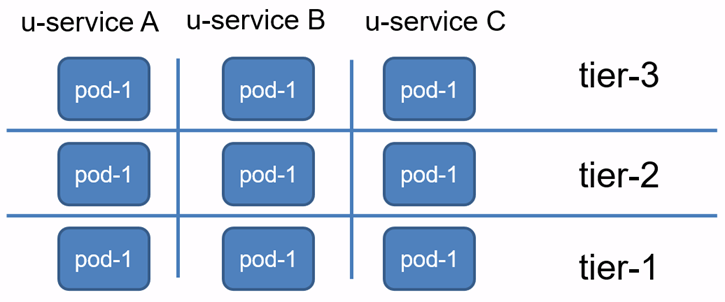Labels and Selectors
Motivation
-Service deployments and batch processing pipelines are often multi-dimensional entities.
- For example, you may have multiple micro-services per tier.

Labels
- Labels are key/value pairs that are attached to objects, such as pods or deployments
- Labels can be used to organize and to select subsets of objects.
They are said to be "identifying", so you can base queries on them. - Non-identifying information should be recorded using annotations.
- Labels can be attached to objects at creation time or later and can be changed
- Each object can have a set of key/value labels defined
- Each Key must be unique for a given object.
- More info here
- exanple:
1"metadata": {
2 "labels": {
3 "key1" : "value1",
4 "key2" : "value2"
5 }
6}
Label syntax
- Labels are key/value pairs.
- Valid label keys have two segments:
- an optional prefix
- a name separated by a slash (/) Example:
1app.example.com/name=my-app
- Read more about label syntax here
Lable Selectors
- Labels do not provide uniqueness.
- Via a label selector, the client/user can identify a set of objects.
- The label selector is the core grouping primitive in Kubernetes.
- The API currently supports two types of selectors:
- equality based example:
1List only pods from app b:
2 kubectl get pods --selector=app.k8s.io/name==appB
3also with one equation mark:
4 kubectl get pods --selector=app.k8s.io/name=appB
5List only pods NOT from app b:
6 kubectl get pods --selector=app.k8s.io/name!=appB
7The , (comma operator) acts as a logical AND operation.
8There is NO logical OR opration.
9So:
10 kubectl get pods --selector=app.k8s.io/name==appB,app.k8s.io/release==3
- set based example:
1Select all pods that are in the (appB, appC) set:
2 kubectl get pods --selector="app.k8s.io/name in (appB, appC)"
3Select all pods that are NOT in the (appB, appC) set:
4 kubectl get pods --selector="app.k8s.io/name notin (appB, appC)"
5Select all of these pods that HAVE the single "nice" label:
6 kubectl get pods --selector=nice
7Select all of these pods that DO NOT have the label "nice:
8 kubectl get pods --selector='!nice'
9 (notice we have used a bash-single-quotation mark)